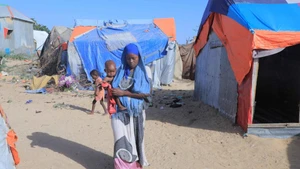The demographics problem with a seriously declining birth rate is a considerable challenge for many countries, because population and social development are closely related.
In Asia, Japan and the Republic of Korea (RoK) are all witnessing a sharp drop in birth rates. The birth rate in Japan fell to a record low of 1.26 in 2022 from 1.57 in 1990, despite government measures to reverse the situation.
Meanwhile, the RoK’s population is forecast to fall from its current 52 million to 38 million by 2070, according to the RoK statistics agency. The total fertility rate in the RoK, which reflects the average number of children born to a woman over her lifetime, has decreased to a record low of 0.78 in 2022.
If population decline is no longer a new problem for the RoK and Japan, the fact that a populous country like China is also facing this trend, shows the risk of a demographic crisis in Asia.
China recorded its first population decline in 2022 since 1961. 2022 was also the year of the lowest birth rate ever reported in the Asian country.
In Europe, countries are also struggling to find ways to increase birth rates. According to the latest report, the birth rate in Switzerland has plunged to a record low in the past 20 years, at 1.39 children per woman. In the European Union (EU), the proportion of people aged 15-29 has changed, from 18.1% of the population in 2011 to 16.3% in 2021.
The declining birth rate and aging population inevitably entail heavy social and economic consequences, such as increased pressure on pension funds and healthcare costs in addition to shortages in the labour force which will hinder economic growth. Recruit Works Institute forecasts that Japan may lack 11 million workers by 2040.
Germany is also pushing for a far-reaching overhaul of its immigration policy to fill a serious shortfall in the workforce. According to the German Chamber of Commerce and Industry (DIHK), more than 50% of German companies are struggling to fill vacancies. The declining working-age population is putting heavy pressure on the labour market and the welfare system. In addition to rising pension costs, the older population will have more of a need for medical care. The World Health Organization (WHO) estimates that there may be a global shortage of up to 10 million health workers by 2030.
In fact, governments have introduced many schemes to support and encourage couples to have children. In order to reverse a very low birth rate, Japanese Prime Minister Kishida Fumio announced a package of measures, including spending more on families with children and providing housing for hundreds of thousands of households.
China has launched pilot projects in dozens of cities across the country to create child-friendly birth and parenting environments. However, fertility promotion efforts face many obstacles, including concerns about environmental pollution, women’s tendency to delay childbirth, health problems after the COVID-19 pandemic, the financial challenges of real estate prices, child care service fees, and others.
The phenomenon of low birth rates and population decline is a serious social problem because it directly affects the socio-economic development of a country and the sustainable development of the world at large. It is an urgent and unstoppable task for governments to focus on boosting birth promotion policies and create the best conditions for raising children.
















